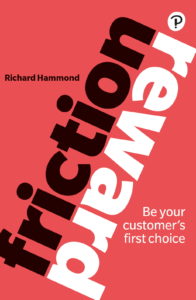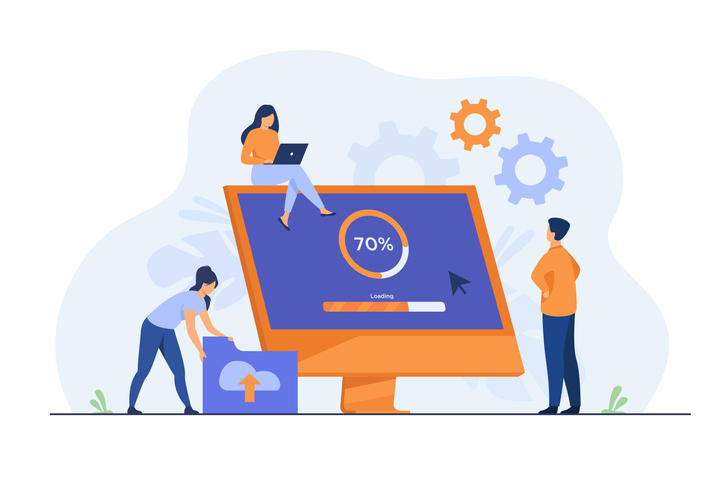Brought to you by Uncrowd.uk
These days, customers call the shots. Brands, retailers and suppliers can no longer dictate; they must give the customer what they want, and more. It’s the truth at the heart of modern business.
This customer power is driven by unprecedented choice, delivered by combination of technology and visibility of alternatives. It is now trivially easy for your customers to go elsewhere.
In this most competitive marketplace of all time, there are three things your business needs to do:
- Make it incredibly easy for customers to buy from you — reduce friction
- Make it amazing to buy from you — increase reward
- Do both — reduce friction and increase reward
All great sales innovation comes from these three driving forces.
Why we need to talk about friction and reward
If you put friction in the way of the customer, things that make it harder to buy from you, then they will go elsewhere. Every business must work to remove friction, to make it easier to buy.
We’ve known this for a long time, of course. It’s what Uber did when they disrupted the taxi industry; what Dollar Shave Club did when they created a business worth a billion dollars to Unilever.
The other side of the equation is building rewarding customer engagements—giving customers what they want and more on top, whether that’s spectacular retail theatre, membership of a tribe, perks or product quality. Offer a service, experience or product that delivers more reward than the friction required to obtain it, and you win. Adidas and Story are doing just that—bringing customers into physical stores by ramping up the reward for doing so.
But the real innovation comes when you truly understand the relationship between friction inputs and reward outputs. Lower friction at the same time as increasing reward, yes, but also you need to understand how the two impact each other. High reward can make high friction palatable for customers. Super low friction can make low reward acceptable. This balancing act between the two is what Amazon do day in, day out, persuading 100 million customers to pay them to experience easier shopping and exclusive access to entertainment.
If you don’t know what your customers need, your competitors will
Say your customer satisfaction surveys are uncovering a lot of love for your post-sales support. Brilliant! That staff training programme you introduced is working! Pats on the back all round!
But what if you were also able to measure how easy or difficult it was for customers to access your post-sales advice? You might uncover an entirely different picture. You can invest all you want in great support staff training but if it’s frustrating to get at that support, that’s investment wasted. Looking at friction and reward together allows you to understand your product, and also what happens when customers try to access it.
If you don’t gather this kind of deep learning from your customer research, one of your competitors will tip the friction reward scale in their favour, and your customers will go to them.
So how do you truly understand that friction/reward relationship in your business?
At Uncrowd.uk we have developed a system of friction/reward indexing, measuring and modelling whole customer journeys — in various need states and every touchpoint between you and the customer — all through the friction/reward metric. This process delivers a deep understanding of customer choice, and an actionable health check that indicates where improvements can be made and changes implemented.
Start right now: a simple and powerful friction/reward exercise
The good news is, you don’t need us to get started. Don’t have the customer data yet? It doesn’t matter; even just thinking in these terms, using your own knowledge of your business, will deliver benefits. Here’s a straightforward exercise that will start you on your own friction/reward journey.
Exercise: Friction Fives
- Identify your five most significant customer missions (descriptions of problems a customer is trying to solve when they come to you).
E.g. Buying patio furniture for the summer - Identify five likely need states your customer might be in on their customer mission (how the customer feels and the situation they’re in).
I.e. price sensitive - List five frictions between you and your customers successfully completing their mission (things that make it hard to buy).
E.g. keeping kids entertained while shopping - List five rewards customers get out of buying from you (the gains from choosing you).
E.g. Assembly hotline - List five competing alternatives a customer could go to complete their mission.
Now ask yourself these three key questions for each mission:
- What overall reward does the customer gain from completing this shopping mission?
- Does the reward outstrip the friction?
- Is there an easier alternative to get the same level of reward?
That third question is where the value of friction/reward indexing starts to go through the roof, because it tells you how your viability matches up to the competition, across both friction and reward.
Uncrowd have designed a free app that will help you make the comparison. It’s not as comprehensive as full indexing, but it’s great for getting you in the ballpark. You can run it once for your own business and once for your competitor. You can get the app direct at healthcheck.frictionreward.com (currently covers grocery, consumer electronics, department store, DIY home improvement, fashion, home furnishings).
Kill friction, create reward
Now look at your lists of frictions and pick out some that you can address right now. Remember to consider the reward side too—what are customers getting back when they encounter this friction? Is the reward greater than the friction? Will reducing friction make the reward more attractive?
The frictions you choose might be the ones at the top of the list, but you might also find some lower down your list that are relatively easy and cheap to smash but make a big positive difference to the customer.
When you begin feeding the full force of your customer data into the friction/reward metric, there are likely to be hundreds of these little opportunities to reduce friction and increase reward across your business. Addressing them can be as powerful in the long run as identifying the major friction-busters that lead to market-disrupting innovation.
Richard Hammond is CEO of Uncrowd Ltd and the author of Friction/Reward : Be Your Customer’s First Choice (Pearson Business), available on Amazon, priced £16.99 in paperback.







